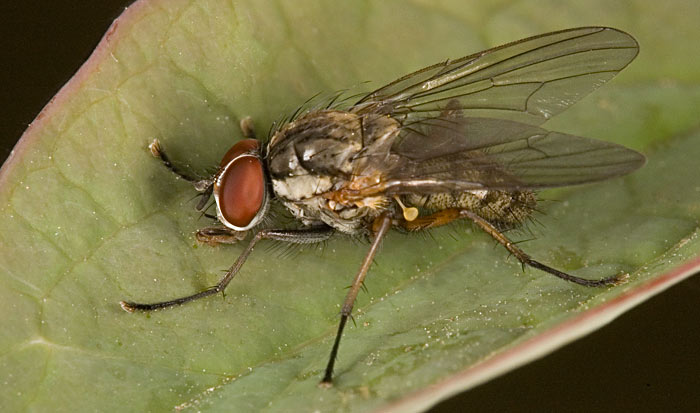To help farmers and agro producers comprehend the everyday nature of microbiological life happening in the field, we have created this forum to discuss plague control in agriculture. We think of the environment as much as the end consumer does, so our approach is sustainable in nature, meaning we promote the adequate use of chemicals and organic products in an eco-friendly manner.
This time around we will go deep into understanding the onion fly plague, which has affected onion and garlic growers everywhere in the country. We will describe the most aggressive stage of this plague, the products and types of control that have proven to be successful, as well as how this plague damages crops.
Onion Fly (Delia antiqua)
ATTACKS: Garlic and onion.
LARVAE (growth stage)
In its growth stage, the onion fly is 6-8 mm, greyish yellow in color, with 5 dark stripes across its thorax, yellow wings, black legs and antennae. They hatch after 20-25 days and lay around 150 eggs each time around. They hibernate in pupal stage on the ground. The first generation is detected between March and April. Hatching starts 15-20 days after the oviposition. They isolate their lays or place them in batches of 20 eggs, always near the neck of the plant, scales or on the ground. The eggs are matte white. The incubation period lasts 2 to 7 days. The number of generations during the course of a year is 4 to 5 from April to October.
DAMAGE
Delia antiqua attacks flowers and green organs. The larvae penetrates plant bulbs causing irreversible damage to the bulb. This also causes damage to the seed during transplantation.
CONTROL METHOD
1) Chemical. Disinfecting seeds is crucial. For each pound of seeds, you must apply 1 oz of MA Heptachloride. Liquid applications should be applied to the seed. Treatments must be repeated every 8-10 days.
2) Organic, mineral, biological control. Neem extract, crisantemos, soy based oil of 1.5 to 2 gallons per acre in foliar application. Beauveria bassiana, Paecilomyces fumosoroseus, Metarhizium anisopliae 40 to 80 oz per acre in foliar applications.
For foliar applications, we strongly recommend the use of our TPS25 Power Sprayer with a 6.6 gallon tank, two stroke 1.8 HP engine. This power sprayer will save you time, making your spray sessions more efficient while covering crops up and down to reach spots where the plague inhabits.











